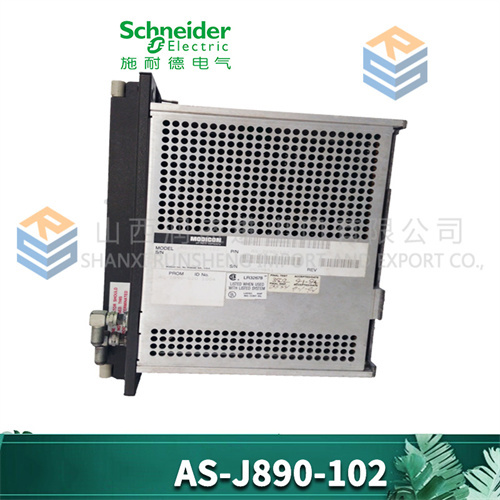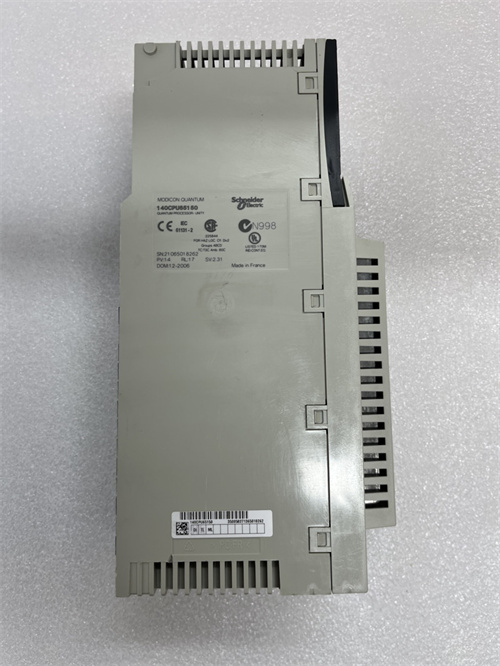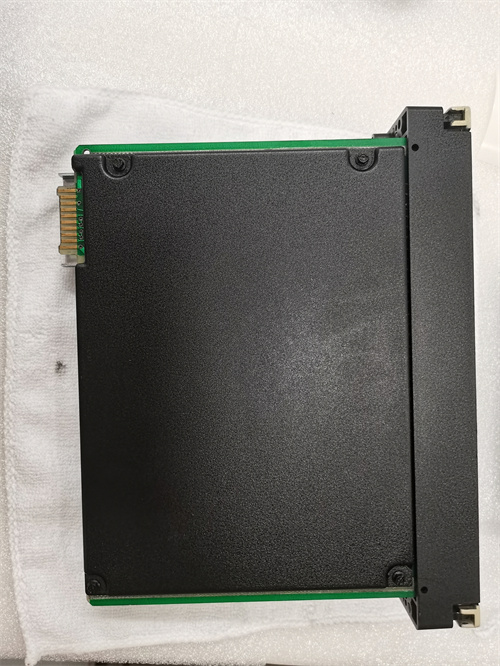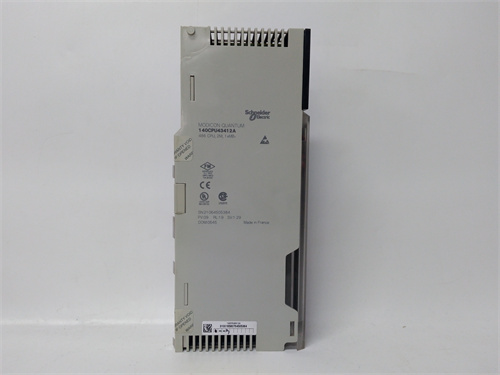Description
1. Product Overview
Without specific details from the manufacturer, we can make some general inferences about the AS – J890 – 102. Based on common naming in industrial and electronic products, “AS” might be the brand or product series name, and it could be a device used in automation, control, or data – handling applications. It may be a control module, a sensor, or a communication device.
2. Hypothetical Functions
- Control Function: If it’s a control module, it could be used to regulate industrial processes. For example, in a manufacturing line, it might control the speed of conveyor belts, the temperature of a heating element, or the pressure in a hydraulic system. It would receive input signals from sensors (such as temperature sensors, pressure sensors) and send output signals to actuators (such as motors, valves) to maintain the desired process parameters.
- Data Acquisition and Transmission: As a data – handling device, it could collect data from various sensors in an industrial environment. This data could then be transmitted to a central control system or a monitoring station. For instance, in a smart building, it might gather data on temperature, humidity, and occupancy from different rooms and send it to a building management system.
- Communication Interface: It may serve as a communication interface between different devices in a network. For example, it could convert signals from one communication protocol to another, enabling seamless communication between legacy devices and modern control systems.

3. Hypothetical Product Parameters
| Parameter | Hypothetical Specification |
|---|---|
| Supply Voltage | 24 VDC, a common voltage in industrial control systems to ensure stable power supply and compatibility with other industrial devices. |
| Power Consumption | Approximately 5 W, indicating a relatively low – power device suitable for continuous operation without significant energy consumption. |
| Interface Types | It could have multiple types of interfaces. Ethernet for high – speed data communication with a central server or other networked devices. Serial ports (RS – 232/RS – 485) for connection to legacy devices or for local configuration and debugging. There might also be analog input/output ports for connecting to sensors and actuators. |
| Number of Inputs/Outputs | If it has analog inputs, it could have 4 – 8 channels to connect to different types of sensors. For digital inputs/outputs, it might have 8 – 16 channels to interface with switches, relays, or other digital devices. |
| Communication Protocols | Support for common industrial communication protocols such as Modbus TCP/IP over Ethernet and Modbus RTU over serial ports. This would allow it to communicate with a wide range of industrial equipment. |
| Operating Temperature | – 20°C to 60°C, enabling it to function in a variety of industrial and environmental conditions, from cold warehouses to warm manufacturing plants. |
| Storage Temperature | – 40°C to 70°C, ensuring the product’s integrity during storage and transportation. |
| Dimensions | [Length: 120 mm, Width: 80 mm, Height: 50 mm], a compact size that makes it easy to install in control panels or small spaces. |
4. Possible Advantages and Features
- Versatility: With multiple input/output channels and support for different communication protocols, it can be used in a wide range of applications. This reduces the need for multiple specialized devices, simplifying the system design and reducing costs.
- Reliability: Designed to operate in harsh industrial environments, it may have features such as electrical isolation, surge protection, and robust enclosures. This ensures reliable operation and reduces the risk of system failures.
- Ease of Integration: The support for common communication protocols makes it easy to integrate into existing industrial networks. It can be quickly connected to other devices and systems without the need for complex custom programming.

5. Potential Application Areas
- Industrial Automation: In manufacturing plants, it could be used to control and monitor production processes, such as in automotive assembly lines, food processing plants, or electronics manufacturing facilities.
- Building Automation: For controlling and monitoring building systems, including HVAC, lighting, and security systems. It can help optimize energy consumption and improve the comfort and safety of building occupants.
- Energy Management: In power plants, renewable energy facilities, or large – scale industrial complexes, it can be used to monitor and control energy consumption, ensuring efficient use of resources.
6. Selection Suggestions
- Function Requirements: Clearly define your specific requirements, such as the number of inputs/outputs, the type of control or data – handling functions needed, and the communication protocols required.
- Compatibility: Ensure that the AS – J890 – 102 is compatible with your existing industrial equipment, including sensors, actuators, and control systems. Check the electrical specifications, communication interfaces, and software compatibility.
- Environment: Consider the installation environment, such as temperature, humidity, and the presence of dust or corrosive substances. Make sure the device can operate reliably in such conditions.
- Cost – Benefit Analysis: Compare the cost of the product with its features and performance. Consider the long – term benefits, such as reduced maintenance costs, improved efficiency, and increased productivity.
7. Precautions
- Installation: Follow the installation instructions carefully to ensure proper grounding and connection. Incorrect installation can lead to electrical interference, malfunctions, or even safety hazards.
- Maintenance: Regularly check the device for any signs of damage or wear. Clean the device if necessary, especially if it’s installed in a dusty environment.
- Software Updates: If the device has associated software, keep it up – to – date to access the latest features, improvements, and security patches.












Reviews
There are no reviews yet.